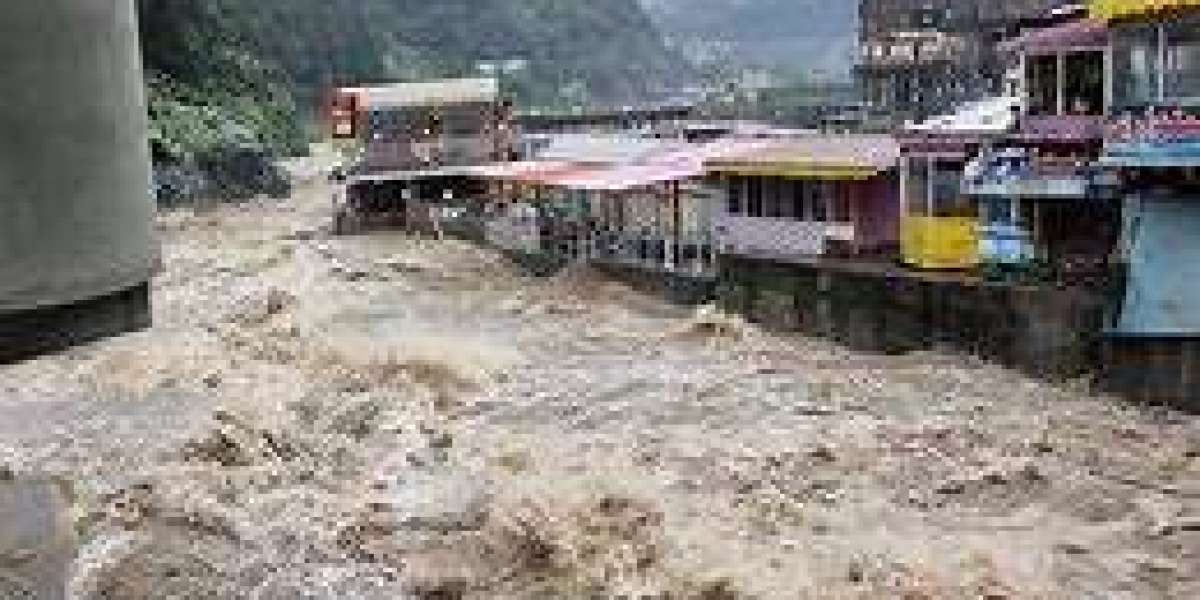In recent days, Pakistan has faced one of its most challenging monsoon seasons in recent memory. Torrential rains, flash floods, and cloudbursts have devastated communities, from the bustling streets of Karachi to the remote valleys of Khyber Pakhtunkhwa. What should have been a season of nourishment and renewal has turned into a story of destruction, displacement, and heartbreak. The floods of August 2025 are not just a natural disaster; they are a warning that climate change and poor preparedness continue to put millions of lives at risk.
Karachi Under Water
Karachi, Pakistan’s largest city and financial hub, witnessed record-breaking rainfall this week. In some parts of the city, rainfall exceeded 170 millimeters within just a few hours—levels not seen in decades. Streets turned into rivers, public transportation came to a standstill, and large portions of the city lost electricity as power lines collapsed under the pressure of flooding.
The provincial government was forced to declare a public holiday as schools, offices, and shops remained shut. For many Karachiites, the storm was not just about inconvenience but about survival. Cars floated away in submerged streets, families were trapped inside their homes, and residents struggled to find clean drinking water as sewage mixed with floodwater.
The crisis highlighted once again the fragility of Karachi’s urban infrastructure. Decades of unplanned growth, poor drainage systems, and encroachment on natural waterways have made the city particularly vulnerable to flooding. While rescue teams and volunteers worked tirelessly to evacuate stranded citizens, the scale of the disaster showed that response mechanisms were not nearly enough for a metropolis of more than 20 million people.
Flash Floods in Khyber Pakhtunkhwa
While Karachi battled urban flooding, the situation in Khyber Pakhtunkhwa (KP) was far more tragic. In the district of Buner, a rare cloudburst triggered massive flash floods that swept away homes, roads, and entire villages within minutes. According to reports, more than 300 people have lost their lives, including dozens of children. Hundreds remain missing as rescue operations continue in remote mountainous areas.
Eyewitnesses described a scene of horror: houses crumbling under the weight of rushing water, families clinging to trees for safety, and livestock carried away by the current. Survivors are now struggling with shortages of food, drinking water, and shelter. Makeshift camps have been set up, but overcrowding and poor sanitation are raising fears of disease outbreaks.
Helicopters and heavy machinery have been deployed to aid rescue efforts, but rough terrain and ongoing rainfall have made access extremely difficult. For many communities in KP, this disaster is a grim reminder of how vulnerable they are to sudden climate events and how little early warning they receive before such catastrophes strike.
Government Response and Criticism
In the aftermath of the floods, Prime Minister Shehbaz Sharif and Pakistan’s Army Chief visited the affected areas to oversee relief operations. The government has pledged compensation for victims and promised to rebuild damaged infrastructure. International agencies, including the United Nations High Commissioner for Refugees (UNHCR), have also called for urgent humanitarian support.
Yet, the response has not been without criticism. Survivors in both Karachi and KP have voiced frustration, claiming that early warning systems were either inadequate or absent altogether. Many residents reported that they received no timely alerts before the flooding, leaving them unprepared to protect their families and belongings.
This lack of preparedness has reignited debates about Pakistan’s disaster management policies. Despite facing devastating floods almost every year, little has been done to strengthen drainage systems, enforce urban planning, or implement comprehensive early warning systems.
Climate Change and the Bigger Picture
Beyond immediate relief and rescue efforts, these floods raise a larger and more pressing question: Are such disasters becoming the new normal for Pakistan? Scientists have long warned that climate change is intensifying monsoon patterns in South Asia. Rare cloudbursts, heavier-than-usual rainfall, and unpredictable weather shifts are all linked to rising global temperatures.
Pakistan, unfortunately, is among the top countries most vulnerable to climate change, despite contributing less than one percent to global greenhouse gas emissions. With glaciers melting in the north and rising sea levels threatening the south, the country finds itself trapped between two climate extremes. The floods of August 2025 are yet another reminder of this precarious position.
To move forward, Pakistan must invest in climate resilience. This means strengthening its early warning systems, building flood-resistant infrastructure, and enforcing urban planning regulations to prevent illegal construction on waterways. On a community level, people must be educated about evacuation drills and emergency preparedness. International cooperation will also be crucial, as Pakistan cannot bear the financial and technical burden of climate adaptation alone.
Lessons for the Future
The images from Karachi’s submerged streets and Buner’s washed-out villages are heartbreaking. But beyond sorrow lies an opportunity: an opportunity to learn, adapt, and prepare. If Pakistan continues to treat each flood as an isolated incident rather than part of a growing climate crisis, history will keep repeating itself.
Preparedness must become a national priority. From government policies to community initiatives, every level of society has a role to play. The conversation about climate change should not remain confined to international conferences—it must translate into local action, stronger infrastructure, and safer communities.
Conclusion
The floods of 2025 are more than just numbers in a headline. Behind every statistic is a family that has lost a home, a parent grieving a child, or a community struggling to rebuild. Pakistan cannot afford to ignore the lessons of this disaster.
Nature has given us a stark reminder that climate change is real, urgent, and unforgiving. But it has also given us a chance to act. If we take this tragedy as a wake-up call, perhaps the future monsoons will not bring fear and destruction, but resilience and safety. The choice is ours.



